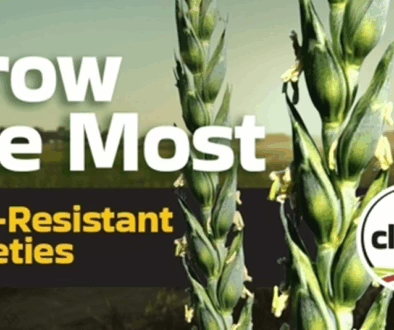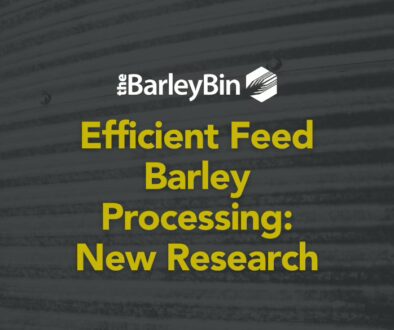Considerations for Winter Feeding and Spring Grazing of Cattle
By Alexis DeCorby, AAg, Livestock and Feed Extension Specialist, Humboldt, Saskatchewan Ministry of Agriculture
Managing Nitrates
Nitrates can accumulate in cereal and oilseed crops and some weeds when they are stressed or during a drought. If an animal’s total diet contains less than 0.5 per cent nitrate (NO3) on a dry matter basis, the feed is considered safe. Levels exceeding 0.5 per cent NO3 on a dry matter basis require management to bring the total diet to a safe level. Feeding management can include providing supplemental feed, limiting NO3 when grazing or using a mix wagon to blend with non-nitrate feeds. Cattle may tolerate higher levels of nitrate over time, but this should be done under the guidance of a nutritionist or livestock and feed extension specialist. To learn more, watch the Beef Cattle Feeding Webinar Series: Nitrates in Feed webinar.
Annual Forages to Expand Grazing
Fall-seeded forages, such as fall rye or winter wheat, can fit into a spring grazing program and provide flexible grazing during prolonged dry conditions. If seeded in the fall, they’ll provide good early spring grazing. When seeding fall cereals, consider seeding dates. The optimal seeding range for fall cereals in the north is Aug. 15 to Sept. 1, while Sept. 1 to 15 is the optimal seeding date in the south. Spring seeded forages can also be used to stretch grazing into the fall, or be harvested for green feed. Before adding cereal crops to your grazing rotation, consider your ability to grow cereal crops, your ability to fence the grazing area and access to water. The end use of forages will play a key role in determining which forages to seed and when they should be harvested. To learn more, watch the Beef Cattle Feeding Webinar Series – Winter Cereals for Spring Grazing and Annuals for Feed webinar.
Alternative Feeds
While alternative feeds are a great option to stretch feed resources, many have anti-nutritional factors such as mycotoxins, excessive sulphur and palatability concerns that need to be considered. As with any new or non-traditional feed, consider how easily the feed will fit into your feeding program, including storage and handling. Alternative feeds may become a costlier venture if you do not have the equipment to efficiently feed it. To learn more, watch the Beef Cattle Feeding Webinar Series – Alternative Feeds webinar.
Read: Maximizing Cattle Performance with Barley Feed
Straw/Grain Rations
Early planning and testing forage quality are important when developing a straw/grain ration. When developing straw-based rations, ensure that cattle do not consume more than 1.25 per cent of their body weight as straw. While straw is palatable for cattle, its high fiber, low energy and low protein content limit its inclusion in the ration. When paired with grain, straw fits well in an early- or mid-gestation ration as the exclusive forage source, depending on the condition of the animals and the time-frame in which they calve. To learn more, watch the Straw and Grain Rations for Beef Cattle webinar.
Read: Feeding Barley Grain to Beef Cattle
Anhydrous and Molasses for Low Quality Forages
When feeding low-quality forages (i.e. straw), ammonia or molasses may be added. Ammonia can be added to improve protein content and marginally improve energy content and fibre digestibility. Molasses may also be added, resulting in a slight protein increase. However, molasses should be limited to no more than two pounds of the ration. This limitation means that it does not significantly improve the energy content of the diet, so it is not a suitable replacement for grain or pellets. Though both products have some benefits, there are downsides to using them. The biggest issue with ammonia is safety, including finding certified personnel to apply it. The cost of ammonia is another deterrent; it is often cheaper to feed quality hay or straw and grain. To learn more, watch the Beef Cattle Feeding Webinar Series – Molasses and Straw, Ammonization and Liquid Protein Supplements webinar.
Conclusion
Considering these factors when developing your winter feeding plan can help you maximize the feed resources on your operation. For more information on this topic or any other livestock-related questions, please contact your local livestock and feed extension specialist or call the Agriculture Knowledge Centre at 1-866-457-2377.
This article was originally published at saskatchewan.ca




